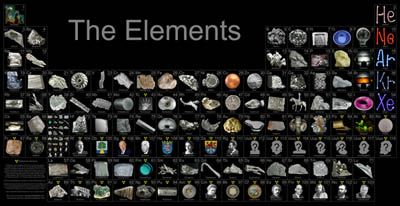|
|
|
|
|
|
|
|
|
|
|
|
|
|
|
|
|
Californium does not occur in nature, but it can be created in nuclear reactors and it has a few industrial applications. It is extremely radioactive, extremely toxic, and extremely hard to get.
|
|
| |
|
|
|
|
|
Sample from the Everest Set.
Up until the early 1990's a company in Russia sold a periodic table collection with element samples. At some point their American distributor sold off the remaining stock to a man who is now selling them on eBay. The samples (except gases) weigh about 0.25 grams each, and the whole set comes in a very nice wooden box with a printed periodic table in the lid.
Radioactive elements like this one are represented in this particular set by a non-radioactive dummy powder, which doesn't look anything like the real element. (In this case a sample of the pure element isn't really practical anyway since the element exists as a short-lived laboratory curiosity only.)
To learn more about the set you can visit my page about element collecting for a general description and information about how to buy one, or you can see photographs of all the samples from the set displayed on my website in a periodic table layout or with bigger pictures in numerical order.
Source: Rob Accurso
Contributor: Rob Accurso
Acquired: 7 February, 2003
Text Updated: 29 January, 2009
Price: Donated
Size: 0.2"
Purity: 0%
|
|
|
|
|
|
|
Poster sample.
This great seal of the State of California appears in my Photographic Periodic Table Poster representing californium, which was discovered there (At UC Berkeley to be more specific) and is named after the state. This highly unstable element can't reasonably be photographed, and a picture of its namesake seemed like a reasonable alternative. The sample photograph includes text exactly as it appears in the poster, which you are encouraged to buy a copy of.

Source: Theodore Gray
Contributor: Theodore Gray
Acquired: 15 April, 2006
Text Updated: 4 May, 2007
Price: Donated
Size: 6"
Purity: 0%
|
|
|
|
|
|
|
|
|
|
|
|
|
|
|